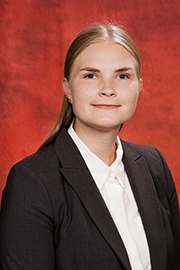Dance in Medicine
Mission and Goals
The FSU COM Dance in Medicine program uses dance as a tool to enhance the well being of patients with Parkinson’s in the Tallahassee community. Our evidence based workshops focus on strengthening balance, coordination, and mobility while providing a safe space for social engagement. We have partnered with the Parkinson’s Patient Support Groups in Tallahassee to provide live and virtual monthly workshops. If you are interested in attending one of our classes, please contact AIM@med.fsu.edu
How do Dance for Parkinson’s Classes work?
Our classes are hosted by medical students who are trained in choreographing dance workshops for Parkinson’s patients. Participants may choose to sit or stand during classes. Our volunteers offer modifications for each movement which allows any patient with Parkinson’s, regardless of the progression of their diagnosis, to enjoy the benefits of our dance workshops. Our live classes are done in a circular formation to increase social engagement and community bonding. Our virtual classes are administered via Zoom and are highly accessible to anyone who is interested. We use the “share audio” feature on Zoom to assure that everyone hears the music as well as they would in person. As facilitators, we choose songs and workshop themes based entirely on the interests of the patients we work with.
Director

Alison Bennett
Facilitators



Left to Right: Akshayaa Sriharan, Ailey Smith, Meghana Bomma
Key Research Articles
1. Dos Santos Delabary, M., Komeroski, I. G., Monteiro, E. P., Costa, R. R., & Haas, A. N. (2018). Effects of dance practice on functional mobility, motor symptoms and quality of life in people with Parkinson's disease: a systematic review with meta-analysis. Aging clinical and experimental research, 30(7), 727–735. https://doi.org/10.1007/s40520-017-0836-2
2. McRae, C., Leventhal, D., Westheimer, O., Mastin, T., Utley, J., & Russell, D. (2017). Long-term effects of dance for PD® on self-efficacy among persons with Parkinson’s disease. Arts & Health, 1-12. https://www.tandfonline.com/doi/full/10.1080/17533015.2017.1326390
3. Bognar, S., Defaria, A. M., O’Dwyer, C., Pankiw, E., Bogler, J. S., Teixeira, S., Nyhof-Young, J. &Evans, C. (2016). More than just dancing: experiences of people with Parkinson’s disease in a therapeutic dance program. Disability and Rehabilitation, 39(11), 1073–1078.https://pubmed.ncbi.nlm.nih.gov/27216230/
4. Westheimer, O., McRae, C., & Henchcliffe, C. (2015). Dance for PD: A Preliminary Investigation of Effects on Motor Function and Quality of Life Among Persons with Parkinson’s Disease (PD). Journal of Neural Transmission, 122(9), 1263-70.https://pubmed.ncbi.nlm.nih.gov/25836752/

